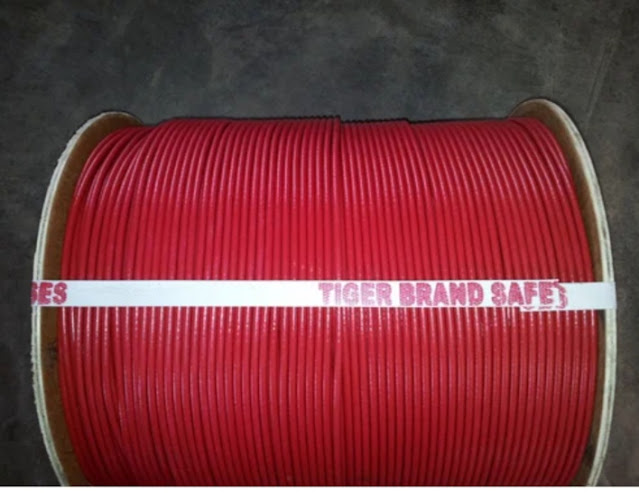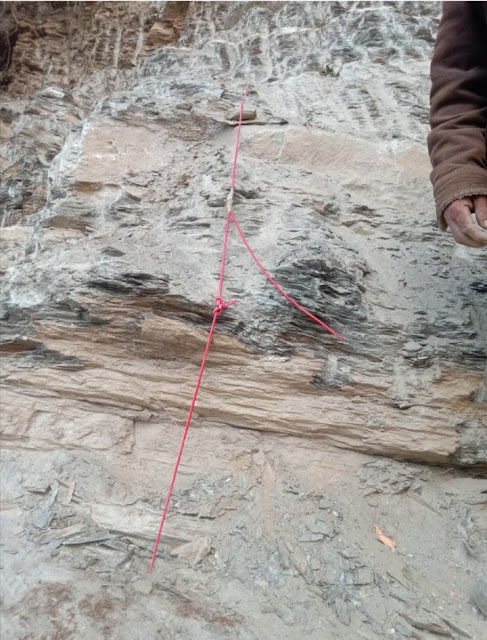General Description
Plain detonators or blasting caps consist of an aluminum shell, closed at one end. The bottom of the shell is filled with a base charge of PETN and a primary charge on top of that. The primary charge, pickups the flame from the safety fuse and converts burning into detonation, initiating the base charge.
The strength of the detonator is expressed in numbers which No. 8 is the most widely used. Such a detonator contains approximately 9 mg of explosive charge.
Technical Characteristics
Strength: No. 8
Shell Length: 35 mm
Shell external diameter: 6.9 mm
Shell inner diameter: 6.2 mm
Application
Plain Detonators are used together with safety fuse to initiate cap sensitive explosives. Although the method is steadily replaced by other initiation methods, it is still the most simple and economical. It can be used in combination with other initiating devices like detonating cord or Non-electric detonator assemblies.
Before any use, plain detonators should always be examined to make sure they are dry and clear from other substances. The fuse should be cut vertically and inserted gently into the cap until it gets in contact with the primary charge (no air gap). It is recommended to use specially designed crimpers to adjust safety fuse into the cap.
Packaging
Plain detonators are packed in cardboard boxes of 100 PCs each.
Storage
Since the open end of the plain detonator is exposed to the environment, it should not be removed from the box prior to any use. Plain detonators are explosive blasting accessories and should be handled stored and used according to the national laws and regulations. They should be stored in a cool, dry, well-ventilated place.
Provided that storage conditions are appropriate, it is recommended to use plain detonators within 18 months.
Product shelf life expansion can be verified after examined by the supplier.
Classification
Commercial Name: Plain Detonators
Technical Name: Non-electric detonators
UN-number: 0029
Division/Compatibility Group: 1.1B
DETONATION CORD
By Standard Number 1926.908 - Use of detonating cord in U.S. DEPARTMENT OF LABOUR.
1926.908(a)
Care shall be taken to select a detonating cord consistent with the type and physical condition of the bore hole and stemming and the type of explosives used.
1926.908(b)
Detonating cord shall be handled and used with the same respect and care given other explosives.
1926.908(c)
The line of detonating cord extending out of a bore hole or from a charge shall be cut from the supply spool before loading the remainder of the bore hole or placing additional charges.
1926.908(d)
Detonating cord shall be handled and used with care to avoid damaging or severing the cord during and after loading and hooking-up.
1926.908(e)
Detonating cord connections shall be competent and positive in accordance with approved and recommended methods. Knot-type or other cord-to-cord connections shall be made only with detonating cord in which the explosive core is dry.
1926.908(f)
All detonating cord trunklines and branchlines shall be free of loops, sharp kinks, or angles that direct the cord back toward the oncoming line of detonation.
1926.908(g)
All detonating cord connections shall be inspected before firing the blast.
1926.908(h)
When detonating cord millisecond-delay connectors or short-interval-delay electric blasting caps are used with detonating cord, the practice shall conform strictly to the manufacturer's recommendations.
1926.908(i)
When connecting a blasting cap or an electric blasting cap to detonating cord, the cap shall be taped or otherwise attached securely along the side or the end of the detonating cord, with the end of the cap containing the explosive charge pointed in the direction in which the detonation is to proceed.
1926.908(j)
Detonators for firing the trunkline shall not be brought to the loading area nor attached to the detonating cord until everything else is in readiness for the blast.
SAFETY FUSE
Blasting with Safety Fuse.
(a) Safety Fuse Initiation System.
(1) Safety fuses shall not be ignited before explosive charges are in place.
Exception: Avalanche blasting.
(2) When blasting with safety fuse, consideration shall be given to the following:
(A) the length and burning rate of the fuse;
(B) the condition of the escape route; and, (C) the distance to a place of safety.
(3) Safety fuses shall not be used in any location, such as a shaft, raise or winz, where the lack of adequate nearby shelter and the distance of travel to a place of safety is such that there is a hazard to employees from flying rock and concussion.
(4) All safety fuses shall be cut sufficiently long to extend beyond the collar of the hole and in no case shall they be less than 3 feet in length.
NOTE: At the usual rate of burning, a 3-foot length of safety fuse will fire a shot in about 2 minutes.
(5) Only single shots shall be fired when using 3-foot safety fuses. If more than one fuse is to be lighted at one time, such fuses shall comply with subsection (6) of this section.
(6) When lighting safety fuse, the fuses shall be so timed that no charge will detonate until at least 2 minutes after the last fuse in the blast area has been ignited.
(7) No one employee shall be permitted to ignite more than 12 safety fuses in succession. When 2 or more safety fuses in a group are lighted as one, by means of igniter cord or other fuse-lighting device, they may be considered as one fuse for the purpose of the subsection.
(8) If more than 3 safety fuses are lighted at one time, no person shall be permitted to enter the blast area until after a period of time equal to 2 minutes for each foot in the length of the longest fuse in the round or 15 minutes, whichever is the longest time.
(9) At least two employees shall be present when lighting fuses.
Exception: Avalanche blasting.
(10) Fuses shall be lit with devices approved for such purposes.
(b) Shock Tube Initiation System.
(1) Connections with other initiation devices shall be secured in a manner which provides for uninterrupted propagation;
(2) Factory-made units shall be used as assembled and shall not be cut except that a single splice is permitted on the lead-in trunkline during dry conditions; and
(3) Connections between blast holes shall not be made until immediately prior to clearing the blast site when surface delay detonators are used.






